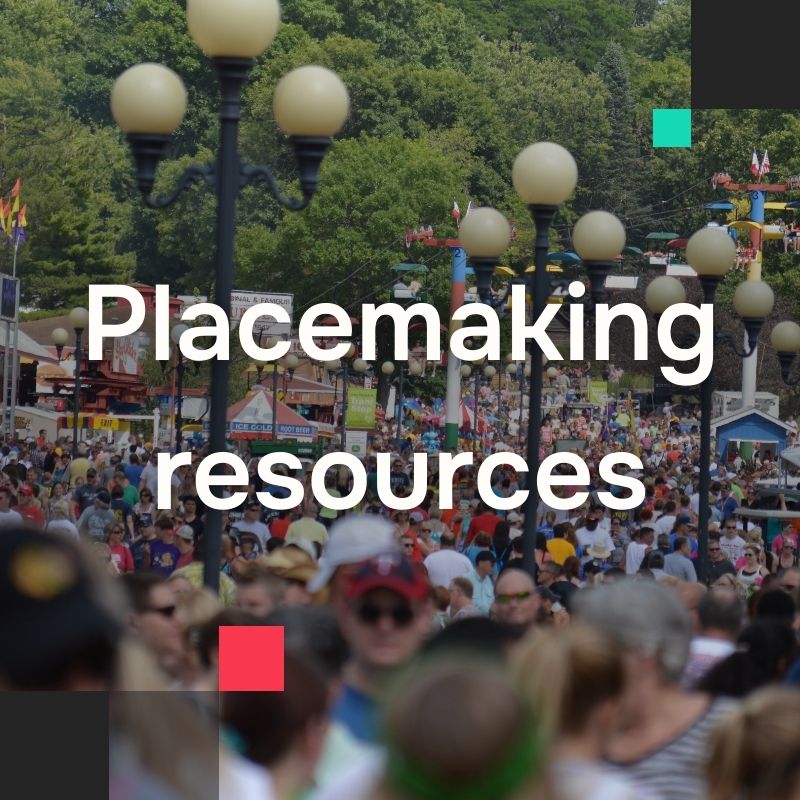As the importance of placemaking increases and becomes a focus strategy for many commercial real estate businesses, placemaking technology is becoming essential for effective deployment, helping landlords to understand the art and science of creating meaningful, engaging spaces. From data analytics and digital twins to augmented reality and interactive platforms, technological innovations are reshaping how developers, planners, and communities conceive and experience urban environments.

The digital placemaking transformation
The integration of technology into placemaking is not merely a trend but a response to the growing demand for smarter, more responsive urban spaces. According to a report by Summer Street Advisors, the global PropTech market is projected to exceed $130 billion by 2033, growing at an annual rate of 16% . This surge reflects the industry’s recognition of technology’s potential to enhance efficiency, engagement, and sustainability in real estate development.
Key technological placemaking innovations
Digital twins and data analytics
Digital twins — virtual replicas of physical spaces — enable planners to simulate and analyze urban environments in real-time. These models facilitate informed decision-making by visualizing the impact of design choices on factors like traffic flow, energy consumption, and pedestrian movement. For instance, the city of Los Angeles employs digital twin technology to manage transportation systems, optimizing traffic patterns and reducing congestion.
Augmented Reality (AR) and Virtual Reality (VR)
AR and VR technologies offer immersive experiences that allow stakeholders to visualize proposed developments before construction begins. In Cardiff Bay, the Ideascape project utilized AR binoculars to showcase future urban transformations, eliciting valuable feedback from residents and informing the design process.
Sensor technology and real-time monitoring
The deployment of sensors in public spaces allows for the collection of real-time data on environmental conditions, foot traffic, and space utilization. This information aids in optimizing maintenance schedules, enhancing safety, and tailoring amenities to user needs. For example, the Queen Elizabeth Olympic Park in London employs sensor technologies to monitor wildlife health and inform sustainable park management.
Interactive mapping and community engagement tools
Digital platforms like Go Vocal’s mapping tool enable residents to provide location-specific input on urban projects, fostering inclusive and participatory planning processes . Such tools democratize placemaking by incorporating diverse perspectives into the development narrative.
Case studies: mportance of placemaking tech
Battersea Power Station, London
The redevelopment of Battersea Power Station integrates a mobile application offering geolocated tours and interactive AR content, enriching visitor engagement and providing insights into the site’s history and future developments.
Virtual Singapore
Singapore’s ambitious Virtual Singapore initiative creates a comprehensive 3D digital model of the city-state, enabling urban planners to simulate and analyze various development scenarios. This digital twin facilitates collaborative planning and enhances the city’s resilience and sustainability.

Looking for more placemaking resources?
Visit our placemaking knowledge base.

Measuring the impact: Placemaking metrics and KPIs
To demonstrate the importance of placemaking across the business, evaluating the success using technology requires a multifaceted approach. Key performance indicators include:
Foot Traffic Analysis
Monitoring pedestrian movement to assess space utilization and identify areas for improvement.
Community engagement levels
Tracking participation in digital platforms and public consultations to gauge inclusivity.
Economic indicators
Analyzing changes in property values, retail sales, and occupancy rates post-implementation.
Environmental metrics
Measuring reductions in energy consumption, carbon emissions, and improvements in biodiversity.
As noted by Calvium, a digital placemaking agency, “the success metrics for two digital placemaking projects will rarely be the same,” emphasizing the need for context-specific evaluation frameworks.
Placemaking challenges and considerations
While technology offers numerous benefits, it also presents challenges, including data privacy concerns, the digital divide, and the risk of over-reliance on technological solutions at the expense of human-centric design. Ensuring equitable access and maintaining the authenticity of places remain paramount.
Technology is undeniably reshaping the landscape of placemaking in commercial real estate. By harnessing digital tools, developers and planners can create more responsive, inclusive, and sustainable urban environments. As the industry continues to evolve, the integration of technology into placemaking will be essential in meeting the complex demands of modern urban life.
See also
Visit our placemaking knowledge base for more resources
FAQ
What is placemaking and why is it important?
Placemaking is a collaborative approach to planning, designing, and managing public and private spaces that emphasizes people’s connection to place. It transforms ordinary environments into vibrant, engaging destinations that reflect community needs, values, and culture. In commercial real estate, the importance of placemaking adds value by improving user experience, increasing footfall, and boosting tenant satisfaction. It’s important because it shifts the focus from buildings alone to the social, cultural, and economic life they support, ultimately making places more attractive to investors, occupiers, and the wider community. Successful placemaking leads to more inclusive, resilient, and commercially viable urban environments.
What are the pillars of placemaking?
The core pillars of placemaking include human-centered design, activation of the public realm, community engagement, cultural relevance, and value creation for owners and occupiers. Human-centered design ensures places are usable and welcoming. Activating the public realm brings energy and function to shared spaces. Community engagement builds ownership and trust. Cultural relevance grounds a place in local identity and meaning. Finally, value creation ensures that placemaking delivers measurable returns, such as higher property values, stronger brand equity, and improved ESG outcomes. Together, these pillars form a holistic framework for making places that are both meaningful and economically sound.
Why is creative placemaking important?
Creative placemaking integrates arts, culture, and design into the fabric of community development to inspire participation, expression, and identity. It’s important because it activates spaces in ways that conventional design cannot—using creativity to foster inclusion, spark dialogue, and shape collective memory. Studies by the Kresge Foundation and ArtPlace America show creative placemaking leads to improved social cohesion, economic revitalization, and increased civic pride. In commercial real estate, it helps differentiate assets, attract diverse users, and align with ESG goals. By embedding creativity into placemaking, stakeholders can unlock emotional connections and long-term loyalty from users and visitors alike.
